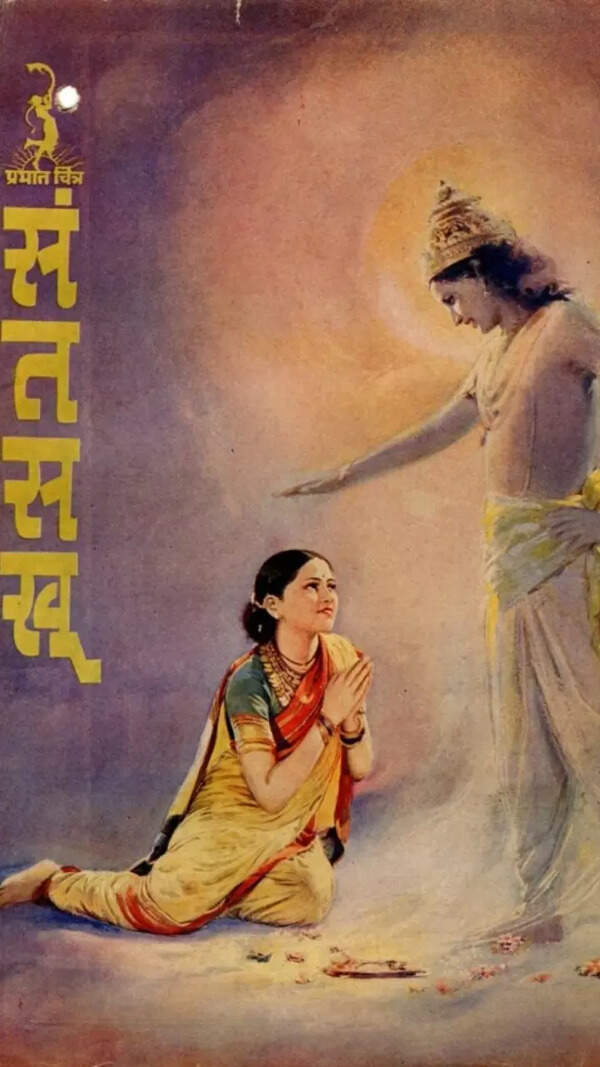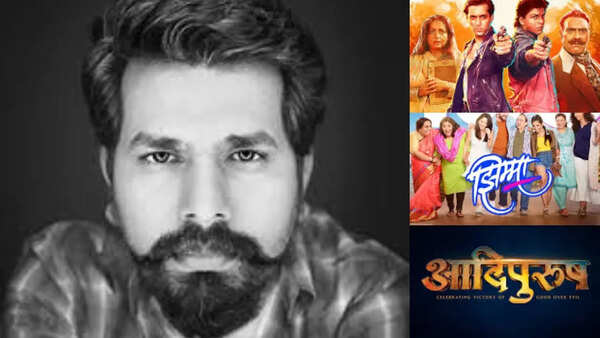From brushstroke to photoshop: How film posters developed- and why the original art still matters. Hindi film news

Long before Indian films embraced digital gloss and photo-editing accuracy, its visual identity was depicted. Film poster There were not only promotional equipment; He was a standalone work of art. Painted in Bold Hughes, he embellished the aspects of the city walls, hoardings and cinema, inviting passers -by to the world of romance, revolution, action and fantasy.This is the story of how the posters of Bollywood film turned into decades-from brushstroke to computer-borne designs-and why the legacy of hand-painted posters should be remembered, restored, and should be revered.Original: India’s first cinematic canvasOne of India’s initial living film posters is believed to be Kalyan Khajina (1926), A Marathi historical based on the life of Shivaji Maharaj. Directed – and possibly designed – by the Baburao painter, it featured a dramatic image of the Maratha warrior, in which a hidden shape was discovered in the chest of a treasure. Some experts, including the art of Bollywood writer Rajesh Devraj, did this poster around 1927, but its artistic merit is timeless.

Before cinema got its rank, India’s most prestigious painter, Raja Ravi VermaMade the basis for the visual story. In 1890, he founded a lithographic press to make art accessible to the public, depicting mythological subjects and gods, which would proceed to impress the initial film poster. Dadasaheb Phalke, the father of Indian cinema, worked with Ravi Verma’s press before the establishment of his own studio and eventually leading India’s first feature film.
Golden age of painted poster (1940 -1980s)
As the art of cinema increased and popularity increased, the art of posters also increased. With the arrival of sound in the film, the 1940s saw the rise of hand -painted scenes as a major form of film promotion. In 1941, Saint Tukram Showed a striking poster by Ravi Verma (not to be confused with King Ravi Verma), including devotional subjects with human emotions – a blueprint for early Indian poster art.

From the 1940s to the 1980s, Poster painted Bollywood’s visual signature became a signature. These designs were marked by vivid colors, exaggerated facial expressions, dynamic pose and large-to-life feelings. The actors often worked with Stills or only described the subject of the film, which rely on their imagination to bring the characters into life.Sachin Suresh GuravOne of the most respected poster designers in contemporary Indian cinema leads to a deep heritage inherent in the traditions of Bollywood’s visual story. His creative contribution is a wide array of films – Queen And Radhe To Hotel Mumbai And Tashkent filesSpeaking about transition in film poster aesthetics for decades, he offered a thoughtful reflection on the development of this unique art:“In the 1920s and 30s, Indian film posters had a beautiful art deco effect. The design was elegant and blind rich, which reflects global design movements while maintaining local tastes.During the 1940s and ’50s’- Posters reflected the national spirit- in the era of pre-independence and post-independence. They were more revolutionary in tone, often showing the male actor’s face prominently, with small representations of the female lead. This was the era of hope, change and patriotism.As soon as we entered the 1960s, romance and escapism took over. Like movies Love in Tokyo Cinematic manifested a new wave of expression. People started traveling abroad and brought global aesthetics back into Indian poster design.The 1970s saw a change in the cultural landscape of Bombay. The posters of this era had a ‘macho’ appeal – packed with dynamic, clotted, and visual details. He aims to tell the whole story in a single frame.

By the 1980s and 90s, photography started replacing the imagery painted. The ‘Angry Young Man’ emerged emerged, and still became the basis for photography posters. Although the film, music, and even posters copied were present, the absence of social media meant that no one really paid attention.After the mid-90s, we saw the rise of computer-borne imagery. By 2010, the cellulide era ended, and the digital film production and poster design took over to take over. Technology improved-many-end cameras, advanced lighting and software changed everything. Hollywood’s influence also strengthened.But I always say one thing-As long as the posters were painted by hand, originality was sacredThere was no copying. Each poster was the pure vision of an artist. Designing film posters is not easy; It takes observation, emotion and imagination. When I make, I keep my eyes open to the world around me, looking for minutes of details that can translate into unforgettable scenes. A good poster should not just sell the film – it should be a part of cinema history. ,
Iconic posters defined an era
Some painted posters have crossed the time to be a part of India’s visual and cinematic heritage:
- Mother India (1957) – Painted by BM Gupta, this poster broadcast Soviet effects with Indian icography, casting Nargis as the face of endurance and maternal power.
- Mughal-e-Azam (1960) – B. Vishwanath’s Regal Design reflected the grandeur and timeless romance of the film.
- Guide (1965) – A soft, developed depiction of Dev Anand and Wahida Rehman captured the poetic soul of the film.
- Sholay (1975) -A high-voltage explosion of drainage, color and anger, it removed the intensity of the film into a single frame.
- Pakezah (1972) – Another BM Gupta Ratna, this ghostly picture of Meena Kumari is a permanent performance in the Film Museum of Mumbai.

Studios and artists shaping a visual language
These excellent works were behind mythological studios and visionary artists:
- Studio MohanC. Operated by Mohan, became a center for iconic scenes.
- Pamart studioUnder the leadership of BS Sirvet, massively, multi-paneal posters were known for posters.
- RK StudioUnder Raj Kapoor, the poster design treated as an extension of the story of the film-RogueThe poster of (1951) is distinguished.
Like artists Ram Kumar Sharma, Diwakar Cancer (Of Satyam Shivam Sundaram Fame), and Srikanth Dhongade Bollywood’s depicted depth and drama brought in the past, considering each canvas as cinema.Milind MathkarWho has designed posters for many Marathi films like ‘Gadad Andhra ‘,Beddak ‘,Fatwa ‘And ‘Sur Sapata ‘Shared your thoughts in a special conversation Etimes,“Poster designing is a very important aspect of filmmaking, but unfortunately, it is not given the importance she deserves. If a film does well, it means that every department has worked hard and contributed to their efforts.When we make a poster, the filmmaker considers many aspects – what is about the film, whether it has an artist contingent, it is set in the era, and its style. The poster is the first glimpse that the audience gets even before the trailer is released. It has the power to attract the audience to the film – this is the first step in any kind of promotion.

Earlier, when there was no social media, people depended on the poster to know what a film was about, which acted in it, and did they want to see it. Poster-making is the form of a deep and fine art, and no AI-borne artwork can replace it, as a poster bears its manufacturer’s soul.We have many incredible painters and poster designers in our industry and worldwide whose work has been celebrated by the audience. Names like MF Hussain still echo in the world of art.Poster-making is an important part of cinema, and we should preserve it. Only an artist can actually express the beauty of creating an excellent work – the intention of brush, the odor of colors, and some beautiful some crafting on the canvas. This is an excellent spirit, which cannot be captured in words. ,
Why painted posters matters
In an era without trailers, teasers, or social media, posters often had an audience’s first encounter with a film. He shaped expectations, created a discussion, and helped to turn new people into stars. For many artists, the poster design was a form of storytelling – an explanatory art that expressed emotion, scale and tone.Each brushstroke intended. The imperfection of human hand gave these posters character and charm. Nargis staring in Mother India Or in Amitabh Bachchan’s silhouette Wall-These were not just scenes, they were cultural imprints.




